Unggulan
- Dapatkan link
- X
- Aplikasi Lainnya
Oldest Human Face Revealed: Ancient Spaniard Lived 1.4 Million Years Ago
- SCIENTISTS UNVEIL THE FACE OF A PREVIOUSLY UNKNOWN HUMAN ANCESTOR
Researchers have uncovered the earliest known human face from Western Europe, which could alter our understanding of human evolution.
The early human referred to as 'Pink' resided in Spain in the Iberian Peninsula around 1.1 to 1.4 million years ago.
That means Pink easily predates the arrival of modern humans, Homo sapiens, on the continent just 45,000 years ago.
The fossilised remains are distinct from other ancient hominin remains found in the area, raising the possibility that Pink could be an entirely new human species.
The fragments of this hominin face were discovered in 2022 inside a cave called Sima del Elefante, Where some of Europe's oldest human remains have been discovered.
However, Pink appears to have a different structure from Homo antecessor, another human species which lived in the same area up to 860,000 years ago.
Instead, he resembles Homo erectus, a far more ancient human species which emerged in Africa two million years ago and was the first to walk on two legs like a modern human.
The research team thinks that Pink's species might have been some of the earliest humans to reach Europe, only to be eradicated later due to rapid climatic changes.
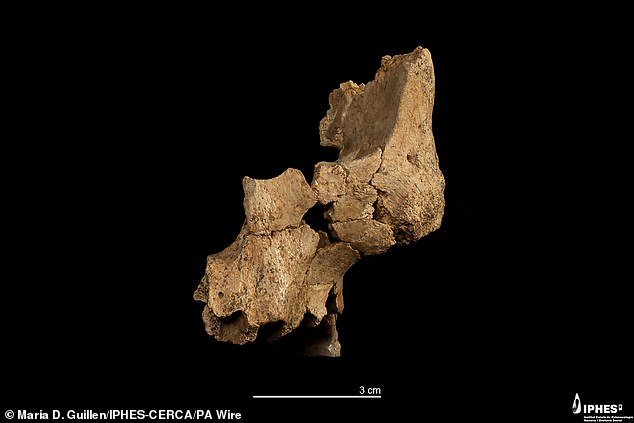
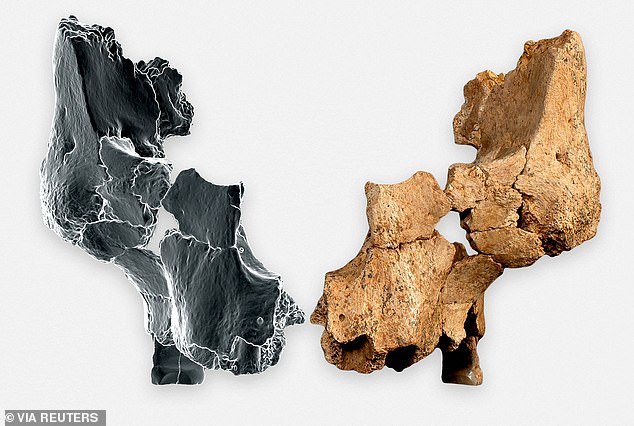
The remains discovered at Sima del Elefante, consisting of various fragmented pieces along with two tooth sections, are thought to be the earliest known instance of human facial bones in Western Europe.
The researchers gave the individual the nickname 'Pink' inspired by Pink Floyd's album "Dark Side of the Moon." In Spanish, this album is titled "La cara oculta de la luna," with "cara oculta" translating to "hidden face."
When Pink’s remains were uncovered, researchers initially believed that they might be attributed to another one of the ancient human species discovered in the region.
Inside the cave, scientists had earlier discovered remnants of Homo antecessor from approximately 860,000 years ago.
By looking at the thousands of other animal fossils found in the same layer of the cave alongside the traces left in the soil by periodic shifts in Earth's magnetic field, the researchers dated Pink's remains to between 1.1 and 1.4 million years ago.
Furthermore, upon meticulously assembling the fragments, it was evident that Pink’s facial structure did not match any known ancient human species from the region.
Dr María Martinón, who leads the National Centre for Research on Human Evolution, explains: "Compared to Homo sapiens, which has a more contemporary facial appearance and pronounced nasal bones, Homo antecessor resembles Pink in having less advanced facial traits, similar to those seen in Homo erectus, notably characterized by a flatter and less developed nose."
Homo erectus was the initial human species to adopt an upright stance and walk similar to contemporary humans, and they were also the first to employ stone implements as cutting tools.

Once it emerged in Africa roughly two million years ago, this species expanded into Asia and eventually reached as far as Eastern Europe.
At a location in present-day Georgia, paleontologists have uncovered five skulls belonging to Homo erectus. tracing back 1.8 million years .
Nevertheless, the fossil record from Western Europe remains notably sparse prior to 800,000 years ago.
Scientists have discovered just one tooth and some stone tools from approximately 1.4 million years ago in Spain, alongside a lower jawbone from Sima del Elefante dating back to approximately 1.1 million years ago.
Close to where Pink's remains were found, scientists also uncovered stone tools crafted from quartz and flint, as well as animal bones with distinct signs of cutting.
This suggests that Pink and their kin had established a basic tool-making industry and were skilled at butchering animals for meat, similar to the abilities of Homo erectus.
The study’s co-author, Dr. Xosé Pedro Rodríguez from the University of Rovira i Virgili (URV), states: "These findings indicate a successful approach for survival and underscore the capability of early humans to utilize the natural assets present within their habitat."
If Pink indeed belongs to the species Homo erectus, this discovery would indicate that this ancient human ancestor ranged much farther and appeared much sooner than researchers previously believed.
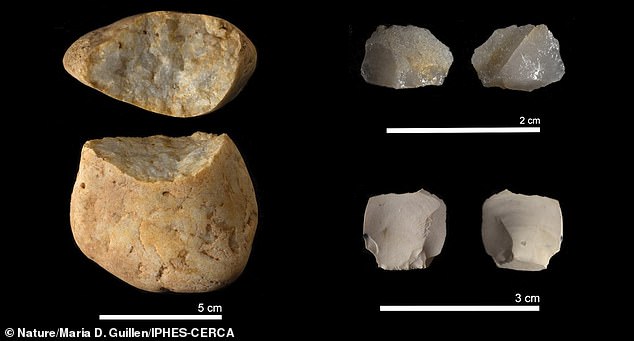
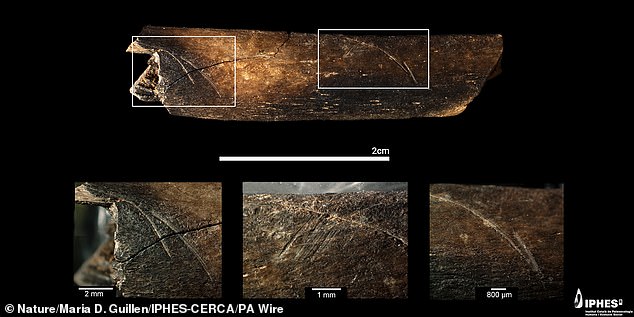
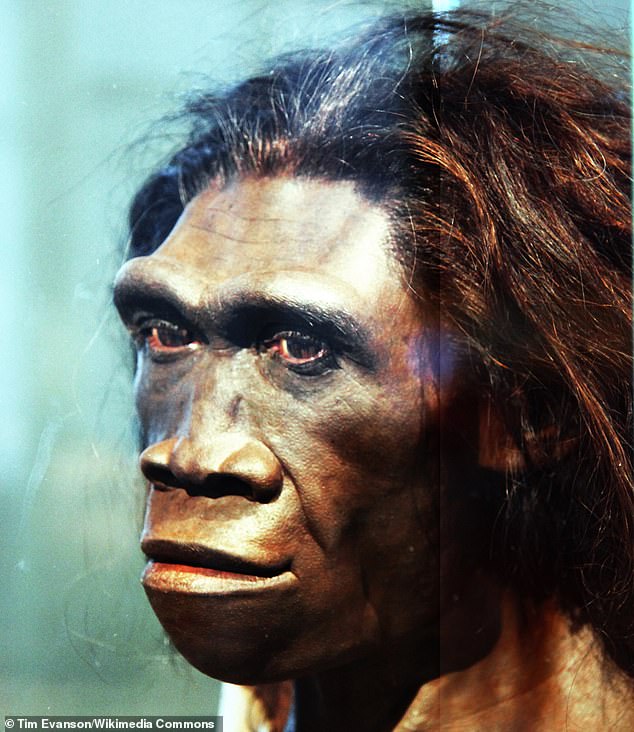
Who were Homo antecessor?
Homo antecessor is among the first types of humans found in Europe, with evidence pointing to their existence up to one million years ago.
Thought to have had a weight of approximately 14 stone, Homo antecessor was believed to be between 5.5 and 6 feet tall.
Their brain sizes were roughly between 1,000 and 1,150 cm³, which is smaller than the average 1,350 cm³ brains of modern humans.
The species is believed to have been right-handed, making it different from other apes, and may have used a symbolic language, according to archaeologists who found remains in Burgos, Spain in 1994.
However, the researchers aren't convinced that Pink is just another member of this human ancestor species.
Although their skulls are similar, Pink's facial structure is narrower than examples of Homo erectus found across Asia and Africa.
But, with only fragments of bone and two worn teeth to go on, the researchers cannot yet be certain that Pink is an entirely new species.
Rather than doing so, they chose to label Pink as 'Homo affinis erectus,' employing the Latin word 'affinis' to indicate its closeness to the recognized species.
Dr. Martinón states: "There isn't enough evidence yet to make a conclusive categorization; therefore, we chose the designation Homo affinis erectus."
She notes that this was carried out to "recognize Pink’s similarities to Homo erectus while still allowing for the chance that the remains could be from a different species."
The scholars contend that Pink's species constituted part of the initial influx of humans into Western Europe.
However, that initial migration seems to have been halted swiftly as the climate on the Iberian Peninsula underwent a sudden shift.

When Pink resided in Spain, the Sierra de Atapuerca area was characterized by a blend of forested zones, marshy meadows, and intermittent bodies of water — creating a bountiful habitat for early human inhabitants.
However, earlier research indicates that there might have been a abrupt change in climate approximately 1.1 million years ago. which had the potential to eradicate humanity.
This might account for the significant gap in the fossil record between specimens attributed to Pink and those of the later Homo antecessor species.
Dr. Eudald Carbonell, a paleontologist from URV and co-director of the project, states: "The evidence pointing to multiple hominin populations in Western Europe throughout the Early Pleistocene indicates that this area played a crucial role in the evolutionary journey of the genus Homo."
Read more- Dapatkan link
- X
- Aplikasi Lainnya
Postingan Populer
National Gallery of Zimbabwe Set to Showcase 80 Photographic Masterpieces
- Dapatkan link
- X
- Aplikasi Lainnya
Nepal: A Golden Land for Content Creators
- Dapatkan link
- X
- Aplikasi Lainnya
Komentar
Posting Komentar